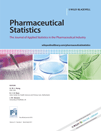Guidelines for accurate EC50/IC50 estimation
Abstract
This article provides minimum requirements for having confidence in the accuracy of EC50/IC50 estimates. Two definitions of EC50/IC50s are considered: relative and absolute. The relative EC50/IC50 is the parameter c in the 4-parameter logistic model and is the concentration corresponding to a response midway between the estimates of the lower and upper plateaus. The absolute EC50/IC50 is the response corresponding to the 50% control (the mean of the 0% and 100% assay controls). The guidelines first describe how to decide whether to use the relative EC50/IC50 or the absolute EC50/IC50. Assays for which there is no stable 100% control must use the relative EC50/IC50. Assays having a stable 100% control but for which there may be more than 5% error in the estimate of the 50% control mean should use the relative EC50/IC50. Assays that can be demonstrated to produce an accurate and stable 100% control and less than 5% error in the estimate of the 50% control mean may gain efficiency as well as accuracy by using the absolute EC50/IC50. Next, the guidelines provide rules for deciding when the EC50/IC50 estimates are reportable. The relative EC50/IC50 should only be used if there are at least two assay concentrations beyond the lower and upper bend points. The absolute EC50/IC50 should only be used if there are at least two assay concentrations whose predicted response is less than 50% and two whose predicted response is greater than 50%. A wide range of typical assay conditions are considered in the development of the guidelines. Copyright © 2010 John Wiley & Sons, Ltd.




